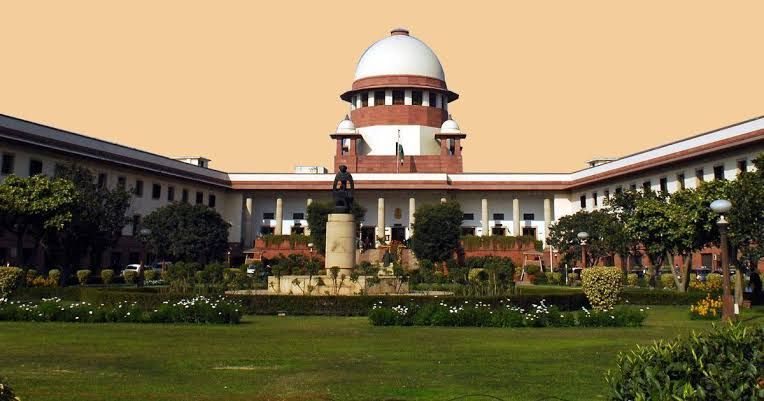CASE NAME- JANHIT ABHIYAN V. UNION OF INDIA, 2019

Author:- AAYUSHI JAIN STUDENT AT INDORE INSTITUTE OF LAW
Introduction
On 9th January 2019, Parliament of India amended Indian Constitution and brought 103rd amendment which was in relation with the reservation for economically backward section of society in spare of education and employment opportunity by amending article 15 and 16 of Indian constitution and in this amendment two new clauses were added first is clause no 6 in article 15 and clause no.6 in article 16 as well. And with this amendments state has the power to make provision specially for the educationally backward classes as well as for the employment opportunity of weaker sections. But this amendment was in issue since the assent was given by the president and as many as 20 petitions were filed over the issue of 103rd amendment in constitution. In this matter 5 Judge bench announced their judgement on the controversies of this amendment in constitution.
FACTS OF THE CASE
After 9th January 2019 February, several writ petitions were filed against 103rd amendment in the constitution in order to deemed 103rd amendment as unconstitutional under article 13 of Indian constitution and as a breach of doctrine of Basic structure. Article 15(6) and Article 16(6) which were added by 103rd third amendment in Indian constitution provides privilege to the state to make provision of special nature for the reservation of economically and educationally backward section of society with 10% upper limit and exclusion of Schedule Caste, Schedule Tribes and OBCS. It was noted that 103rd amendment only aim provide privilege to state which is not mandatory in nature i.e. enabling in nature which means that if state thinks fit or think it as necessary for the welfare of society then state can make provision for EWS.
MAJOR ISSUES INVOLVED IN THIS CASE
- Basic structure of Constitution is infringed by providing reservation on the basis of economic criteria. The issue is – Weather economic criteria can only be the sole reason for providing reservation to particular section or classes???
- Whether exclusion of Schedule Caste, Schedule Tribes and OBCS. from special provision infringes doctrine of basic structure??
- Whether 50% cap of reservation is infringed by providing 10% upper limit for EWS through 103rd amendment which directly affect the basic structure of Constitution???
ARGUMEMTS OF PETITIONER SIDE-
Petitioner side submissions were that the provision for the reservation that were given by the Constituent Assembly in 1949 were only based on age old discrimination and to provide chance of equal representation to each and every section or classes of society and to provide them opportunity to address inequalities suffered by them. Petitioner arguments against the 103rd amendment are-
- 103rd Amendment provides reservation for the never marginalized or discriminated class of people and affect reservation policy.
- Petitioner also contended that the social and educational backwardness both are not mutually exclusive, for reservation there is a need to satisfy both not one.
- Petitioner contentions were that 103rd amendment is individual centric, which provide reservation for classes who were never oppressed or discriminated, against those who were.
- Provide reservation not to economically backward classes but to financially incapable society or for individual centric which is against democracy.
- It was also contended that solely economic criteria cannot be the purpose for reservation as a same has been established by 9 judge bench in case of Indra Sanway and due to which five judge bench is not capable to contradict that.
ARGUMENTS OF RESPONDENT SIDE-
Following arguments were made by respondent-
- 103rd amendment was made by parliament from the virtue to remove caste base society or to take step forward to make caste less society and also make distinction between classes not between caste.
- 103rd amendment does not break the basic structure but it vitalizes it and as per article 13 amendment can only be struck down when it affects the identity of constitution.
- In several cases Supreme Court considered poverty as an indicator or sign of backwardness, so reservation or classification based on economic criteria solely is justified.
- It was further contended that the main reason behind educational and social backwardness is economic inequalities. So by 103rd amendment parliament tries to remove social and educational backwardness through providing reservation to EWS and further this amendment is basis on economic justice and provide strength to basic structure.
JUDGMENT
By the 3:2 majority Supreme Court of India up held 103rd amendment constitutionality. On basis of 4 questions-
- Doctrine of basics structure
- Discrimination by the way of exclusion of Schedule Caste, Schedule Tribes and OBCS.
- Due to solely economic criteria for providing reservation under the 15(6) and 16(6) of Indian constitution.
- EWS application and institution of private nature
DISSENTING OPINION OF CJI UU LALIT AND J.RAVINDRA BHAT
CJI UU Lalit and J. Ravindra Bhat held 103rd amendment as unconstitutional as it affect basic structure of constitution on some grounds like exclusion of Schedule Caste, Schedule Tribes and OBCS from special provision, due to providing reservation fully on economic criteria, that it effects the goal of equal representation of all classes of society.
CONCLUSION
As India is still suffering from poverty so there is a need to take strong measure to remove it and to provide benefit to every stratum of society. Supreme Court interpret 103rd amendment as achievement of goal setup by preamble by the way of economic justice to all. However dissenting opinion of CJI UU Lalit and J. Ravindra Bhat held it as an unconstitutional on the basis of historical essences. This judgement showcase that both the aspect social and economic are co-dependent on each other and it is essential for the interest of society that both must be factor together.





